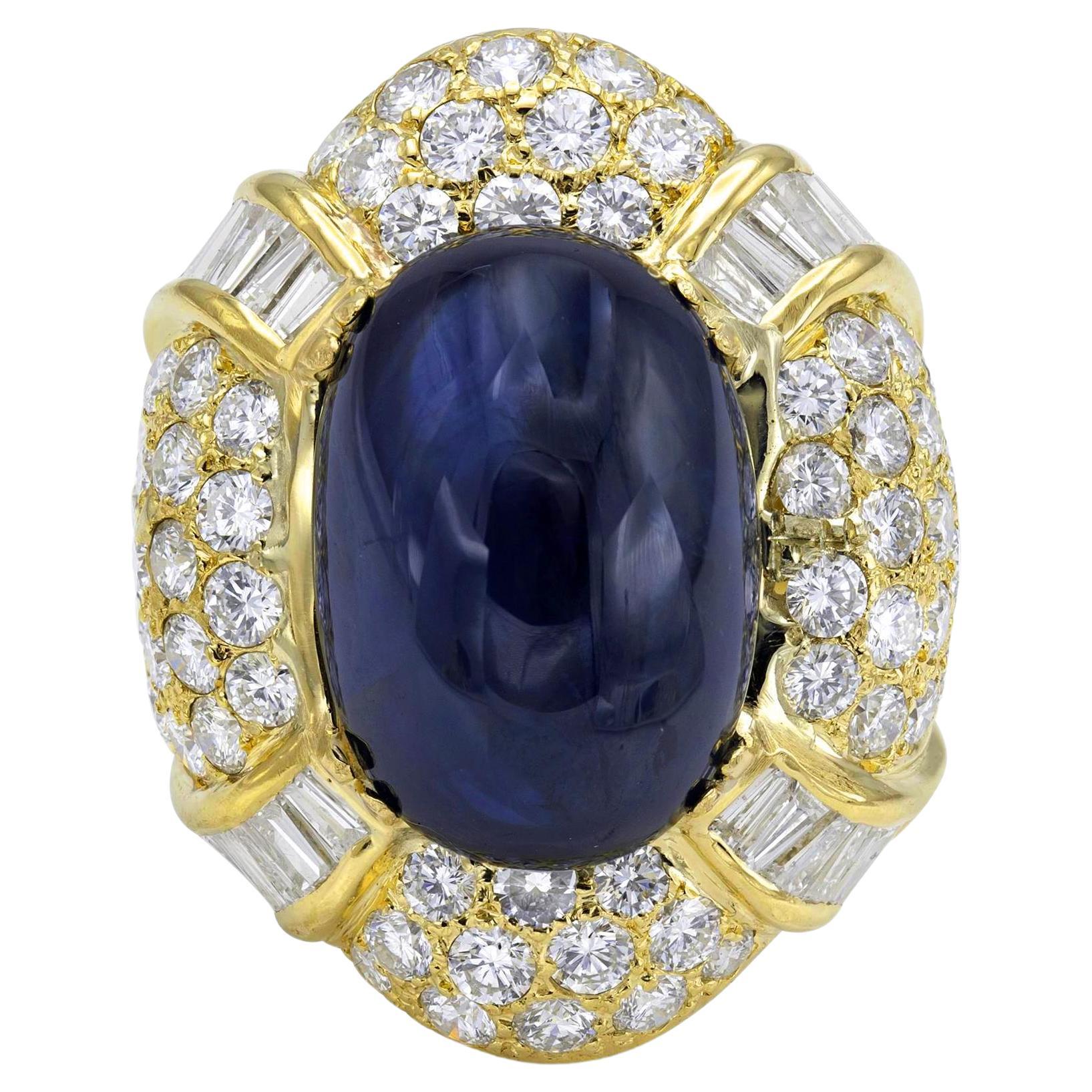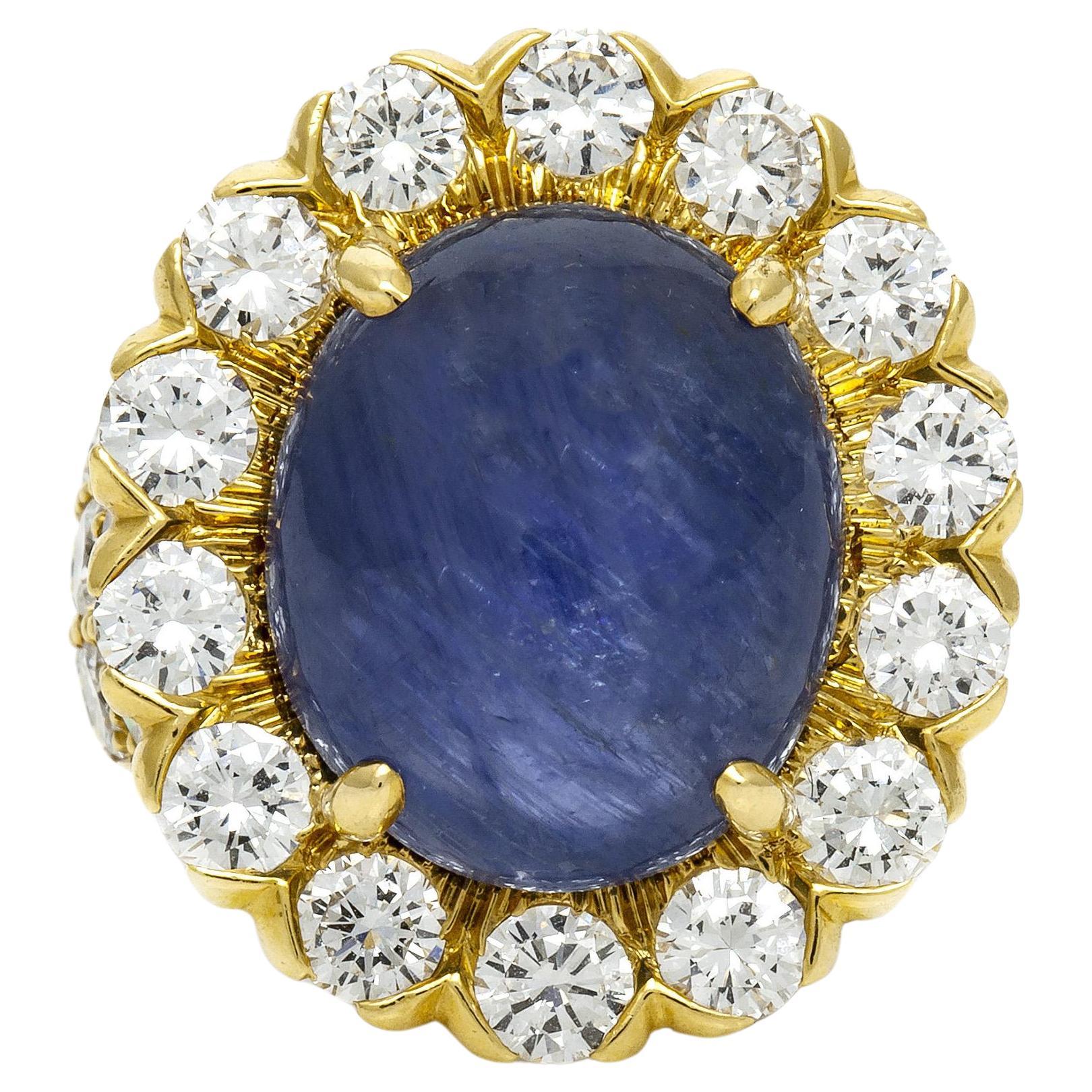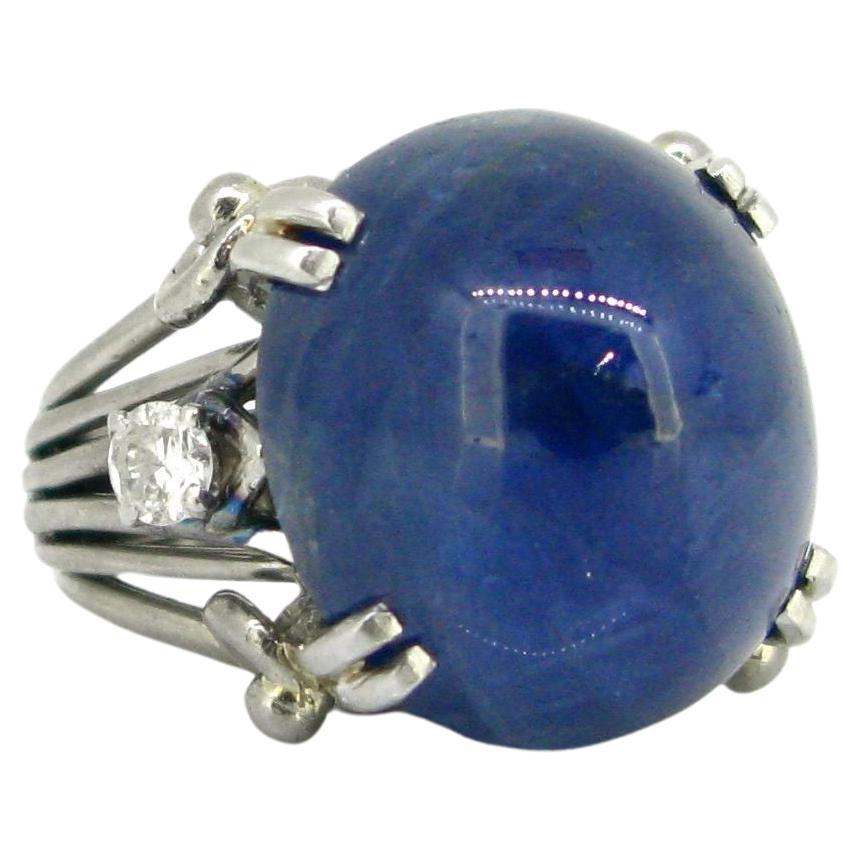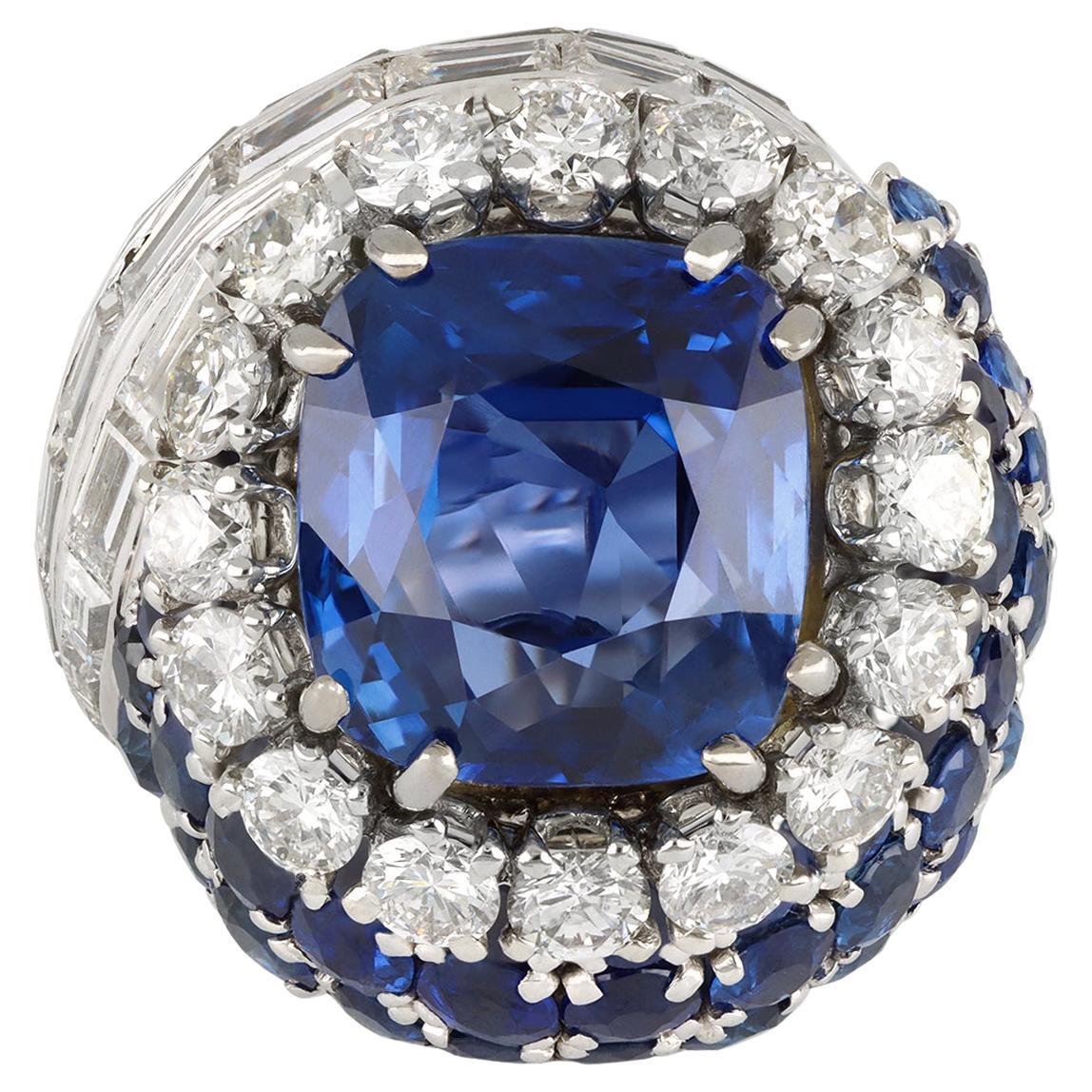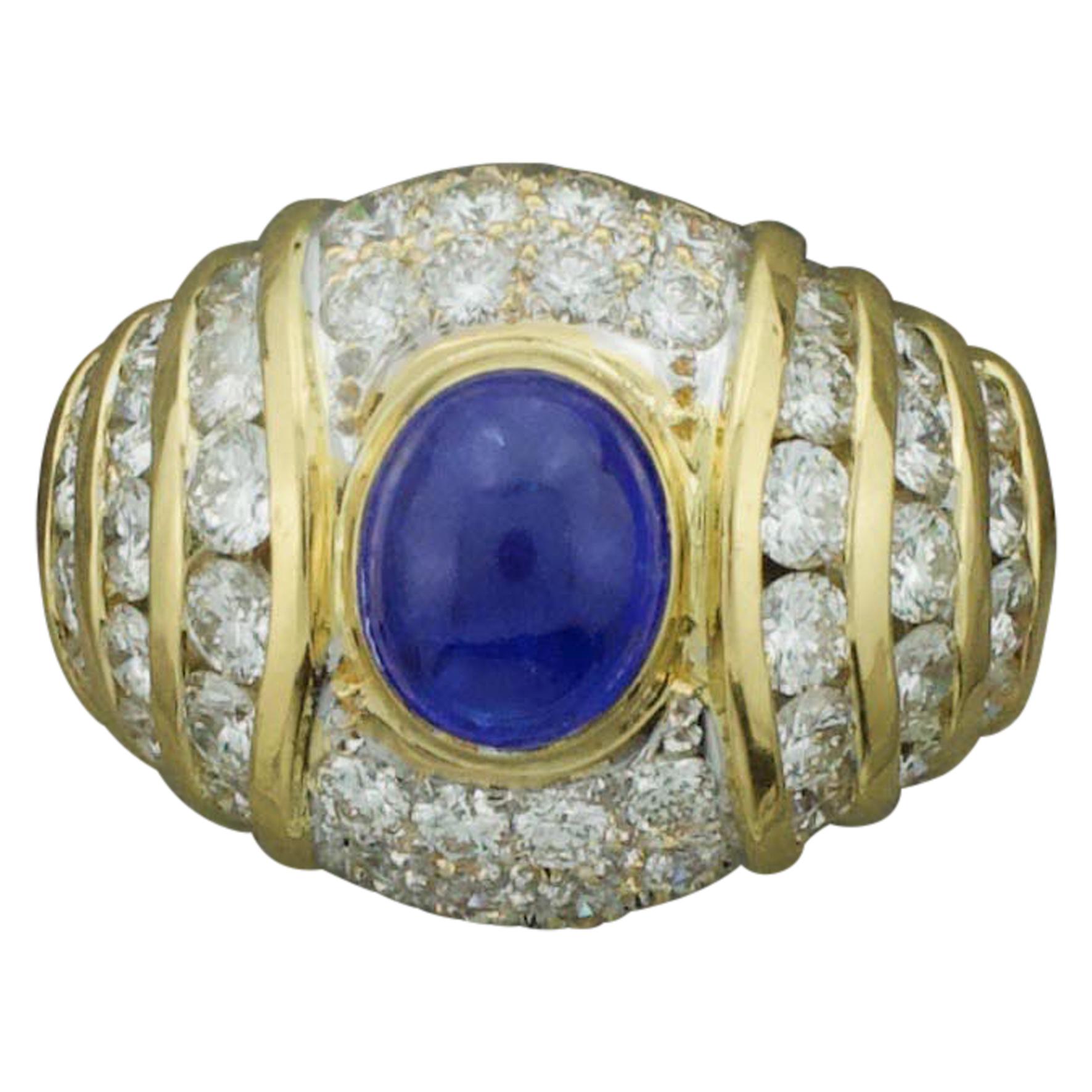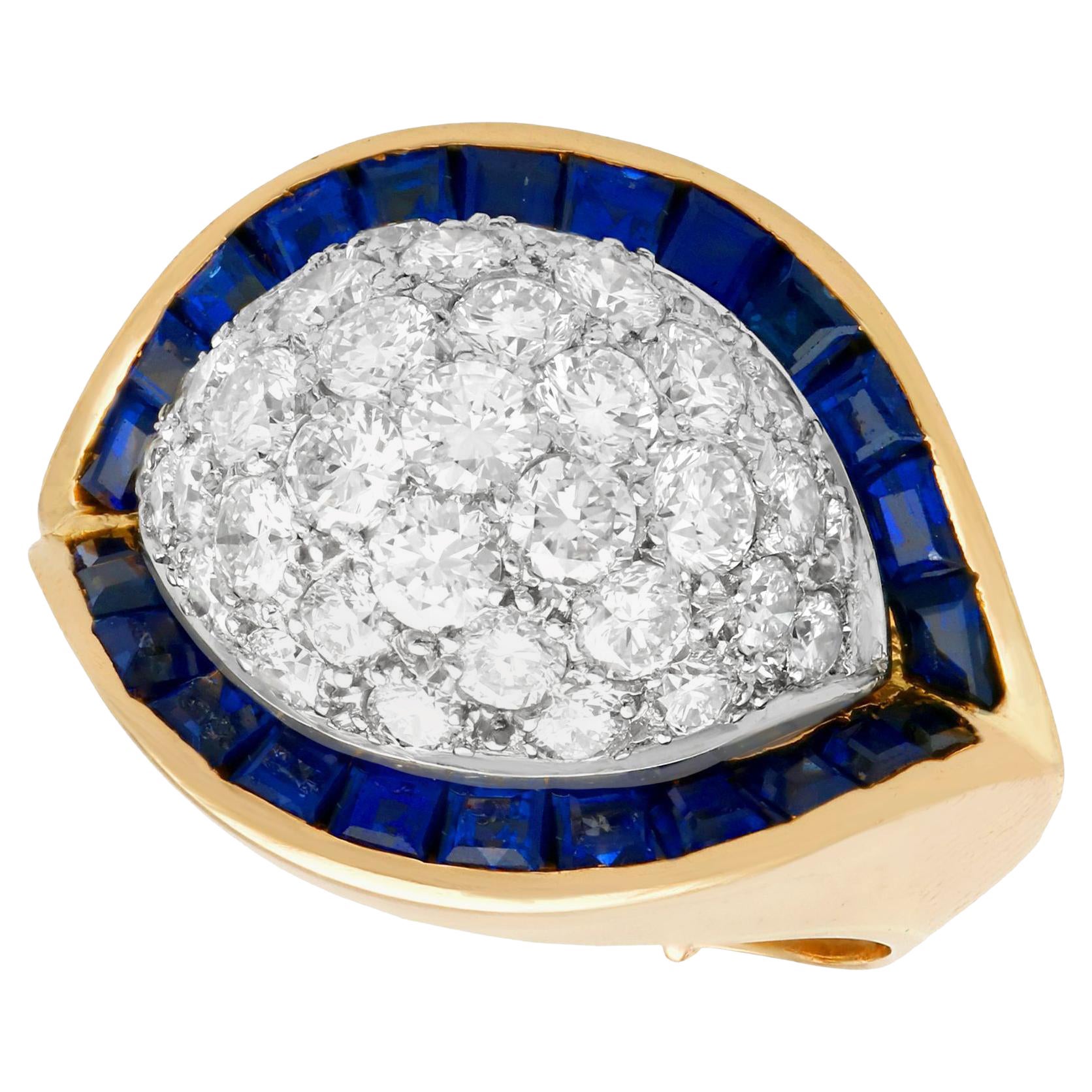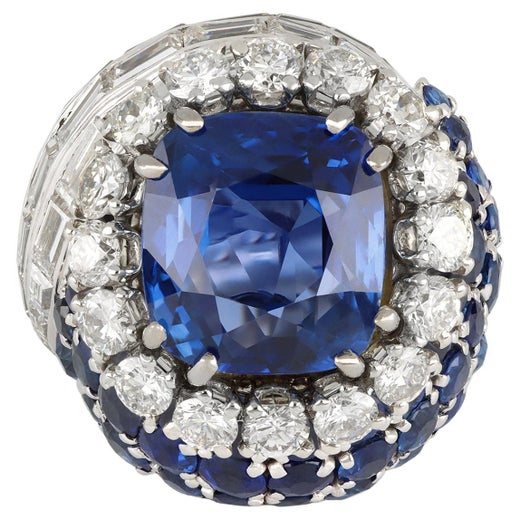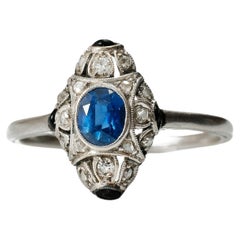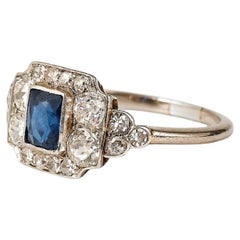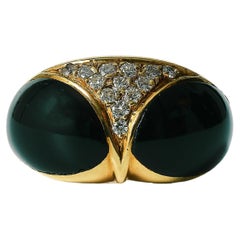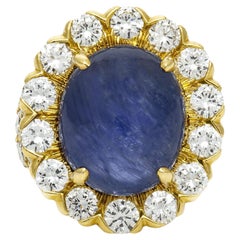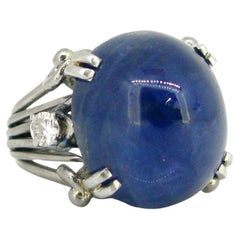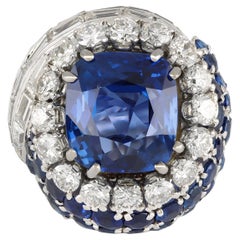17ct sapphire ring by Sterlé, ca 1960
About the Item
- Creator:
- Ring Size:5 US, Resizable
- Metal:
- Stone:
- Stone Cut:
- Weight:17 ct
- Style:
- Place of Origin:
- Period:
- Date of Manufacture:1960
- Condition:Wear consistent with age and use.
- Seller Location:Malmö, SE
- Reference Number:1stDibs: LU3148226504142
Pierre Sterlé
The loss of his father in World War I led to Pierre Sterlé’s mentorship under his uncle, who supported his ascension into the jewelry design world. At the height of his success, Sterlé designed for jewelry titans Boucheron, Chaumet and Ostertag. He won the De Beers Diamond Award three years in a row and operated out of an exclusive boutique in Paris that served the elite and royal families by appointment only.
His uncle was a Parisian jeweler on the rue de Castiglione. Sterlé started his own workshop at the age of 29 and spent five years designing for eminent Parisian jewelry houses on rue Sainte-Anne. By the mid-1940s, Sterlé had moved his atelier closer to the Place Vendôme to better serve his wealthy patrons, who included French author Colette, King Farouk of Egypt, the Maharani of Baroda and the Begum Aga Khan.
Sterlé had a remarkable ability to “knit gold” into woven masterpieces. His technical prowess was unmatched by anyone in Paris, and arguably the world. His “angel wire” technique, considered his signature style, incorporated gold into fine ropes that became link bracelets, cocktail rings and accents on decorative pins and brooches. The effect gave a sense of movement and life to the pieces, something Sterlé strived for in his attempts to make metal and precious gemstones less rigid and cold.
Two misfortunes derailed his business. The first was a failed venture into perfume, which resulted in having to sell many of his designs to Chaumet and New York jeweler Montreaux. Sterlé rebounded with a successful display at the 1966 Biennale in Paris, where he was the first modern jeweler ever invited. His second misstep was more damaging. He opened an exclusive shop on the rue Saint-Honoré in 1969. It was unsuccessful, and he was forced to declare bankruptcy, selling most of his stock to Chaumet in 1976.
Sterlé stayed on with the company as a consultant until his death two years later in 1978.
On 1stDibs, find a collection of vintage Pierre Sterlé rings, earrings, bracelets and more.
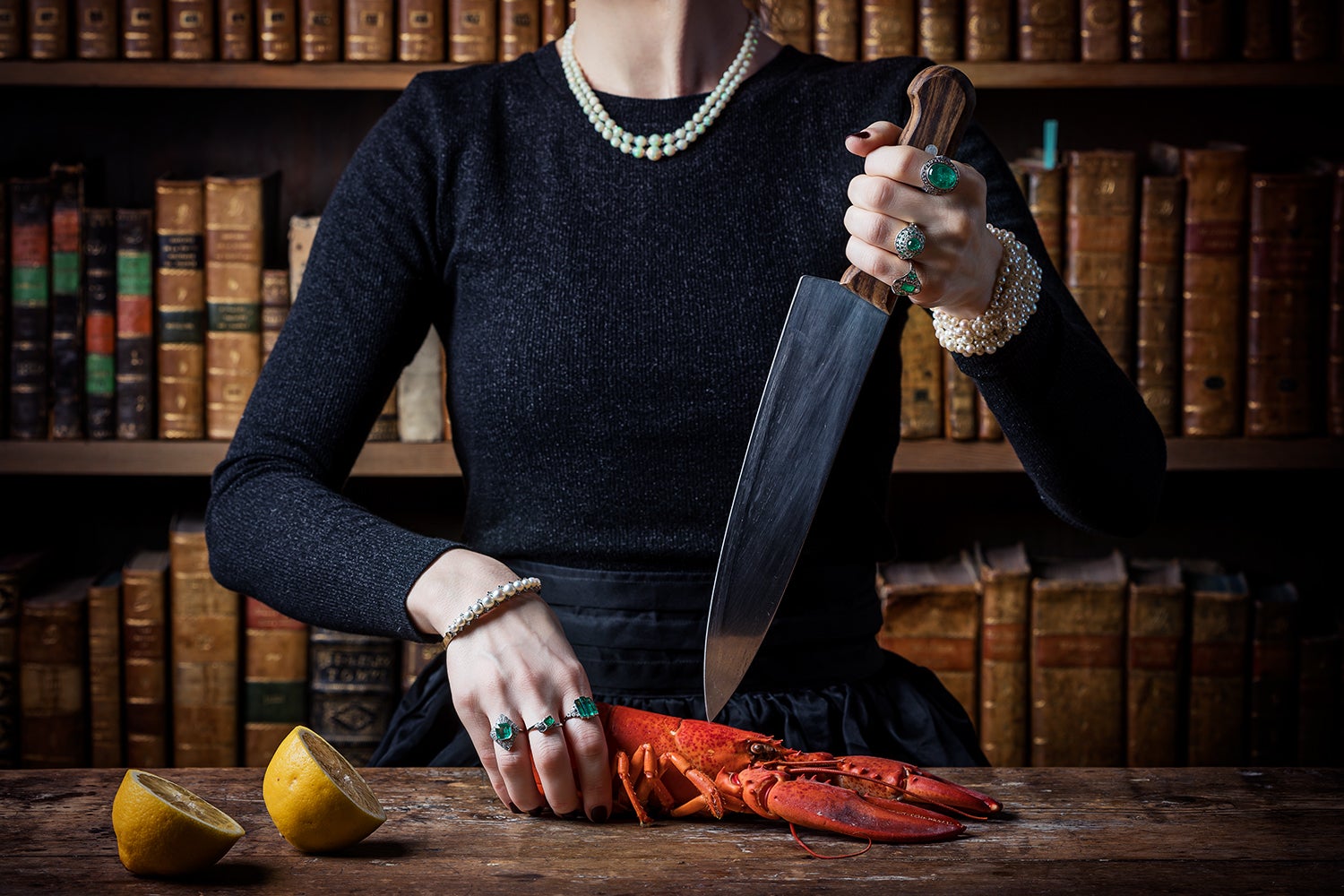
- ShippingRetrieving quote...Shipping from: Malmö, Sweden
- Return Policy
More From This Seller
View AllVintage 1920s European Art Deco Cocktail Rings
Diamond, Sapphire, Platinum
Vintage 1930s Swedish Art Deco Cocktail Rings
Diamond, Sapphire, Platinum
Vintage 1980s Cluster Rings
Diamond, Sapphire, Platinum
1990s Italian Modern Fashion Rings
Onyx, Diamond, Yellow Gold, 18k Gold, Gold
1990s French Modern Cocktail Rings
Tourmaline, Gold, 18k Gold, Yellow Gold
Antique Mid-19th Century English Engagement Rings
Diamond, Enamel
You May Also Like
Vintage 1970s Cocktail Rings
Diamond, Sapphire, 18k Gold
Vintage 1970s Cocktail Rings
Diamond, Sapphire, 18k Gold
Vintage 1960s Dome Rings
Blue Sapphire, 18k Gold, Platinum
Vintage 1950s French Post-War Cocktail Rings
Sapphire, Platinum
Late 20th Century Unknown Modern Wedding Rings
Diamond, Sapphire, Yellow Gold
Vintage 1960s French Art Deco Cocktail Rings
Diamond, Sapphire, 18k Gold, Yellow Gold, Gold
